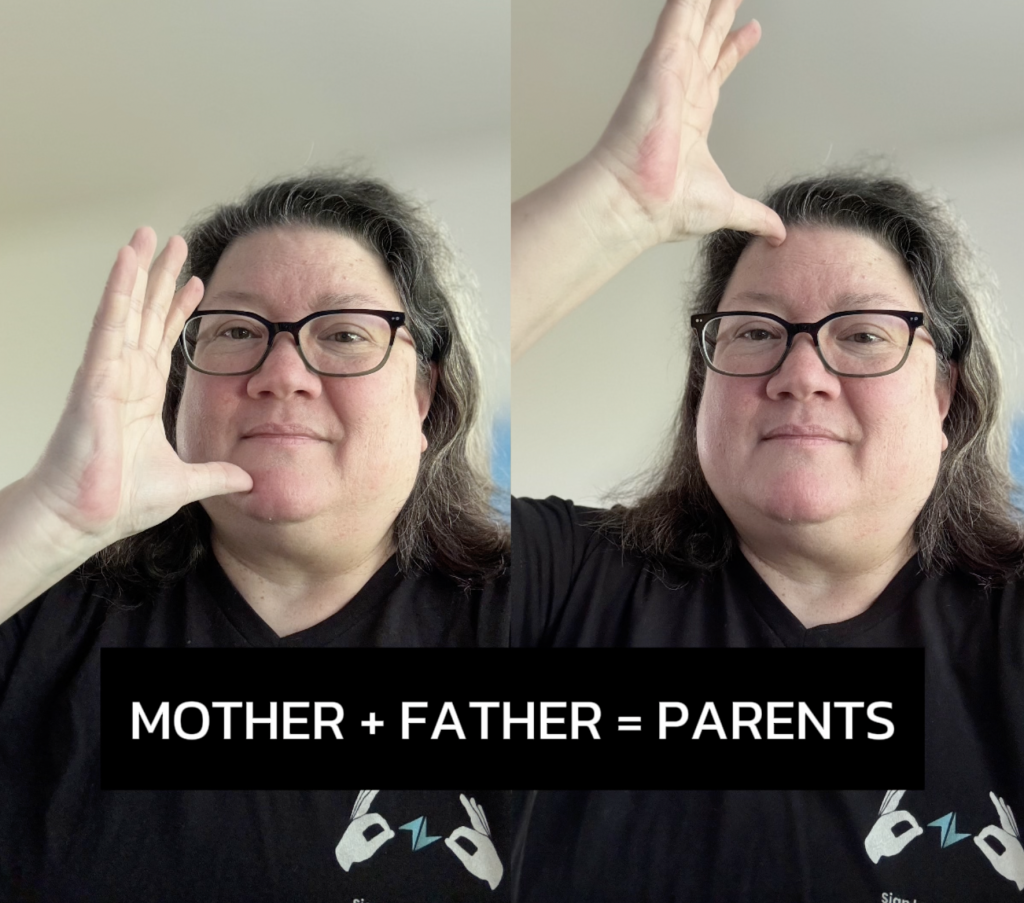One of the key components of American Sign Language is the use of five parameters, which are used to convey meaning and nuance in signs.
The meaning of a signed word can change when any of its key parameters are altered. For example, in English, incorrect pronunciation or spelling errors may change the meaning or render the word meaningless.

The ASL word for PARENTS demonstrates how ASL signs often incorporate multiple parameter changes in a single production.
Specifically, the ASL sign for MOTHER + FATHER (PARENTS) utilizes one handshape, one movement, and one palm orientation, yet two distinct locations.
This exemplifies how ASL signs frequently layer multiple prime parameters – handshape, movement, location, palm orientation – within a single sign.
5 Parameters
The five parameters of ASL are handshape, movement, palm orientation, location, and non-manual markers (NMM).
1. Handshape
It refers to the specific shape of the hand used to create a sign, with different handshapes representing different words or concepts. ASL utilizes more than 55 distinct handshapes for signing.
Linguists debate the exact number of core handshape units, or “primes,” as a handful of handshapes have subtle distinctions. This is similar to how estimates for the number of phonemes in English range from 40 to 44, depending on the analysis used by different linguists.
Here’s the example:
The ASL words for YELLOW (on the left) and BLUE (on the right) share the same location, movement, and palm orientation, but have different handshapes.
2. Movement
ASL relies on five key parameters, one of which is movement – how the hand(s) move through space. Movement includes motions such as shifting the hands upward, downward, backward, forward, diagonally, waving, zigzagging, and more.
Here’s the example:
The signs for NEED and MUST share the same parameters, except for the movement. The sign for “need” has a repeated motion, while the sign for “must” has a single movement.
3. Palm Orientation
When signing a word, palm orientation refers to the direction the palm faces, such as up, down, toward the signer, or away from the signer. It is one of five key parameters that distinguish signed words.
Here’s the example:
The American Sign Language (ASL) signs for MAYBE and BALANCE share the same handshape, location, and movement, but differ in their palm orientations.
4. Location
The location of your hand is an integral part of each sign in sign language. For example, a sign could require placing your hand on your forehead, holding it in the air, or touching your chest. The meaning of a sign is dependent on both the handshape and its location.
Here’s the example:
Though sharing the same handshape, movement, and palm orientation, the words for UGLY (on the left) and SUMMER (on the right) differ in their location, resulting in distinct meanings despite their similar signs.
5. Non-Manual Markers (NMM)
The final parameter of American Sign Language is non-manual markers, or “NMM” for short, which include facial expressions and body language that are vital for conveying meaning. Non-manual markers add crucial nuance to signs that would otherwise be incomplete without these important nonverbal cues.
Non-manual markers in sign language include facial expressions like raised eyebrows, wrinkled nose, open or closed mouth, as well as eye gaze direction, intensity, and position.
NMM: furrowed eyebrows, cha, oo
Learning and mastering five key parameters—handshape, movement, location, palm orientation, and non-manual signals—enables effective communication in ASL, allowing individuals to convey nuanced ideas and emotions. Grasping these essential elements is vital for anyone aiming to gain proficiency in ASL and meaningfully connect with the Deaf community.
Until next time, ta ta! 😄🤟🏻



